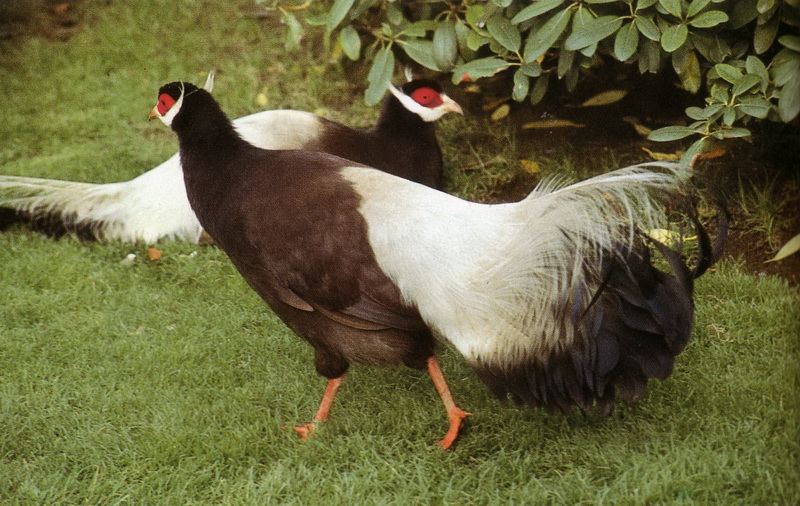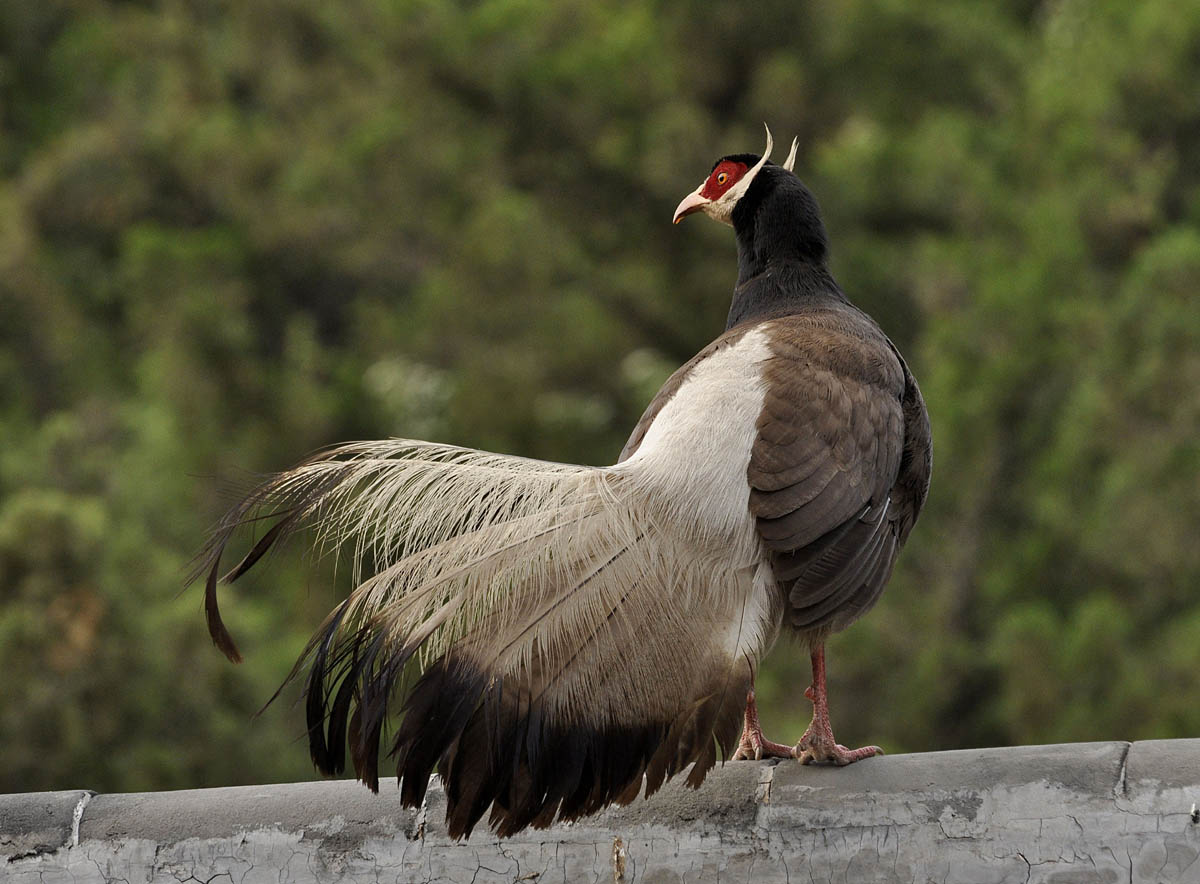
Crossoptilon mantchuricum
SUBFAMILY
Phasianinae
TAXONOMY
Crossoptilon mantchuricum Swinhoe, 1863, vicinity of Peking =
Beijing, China. Monotypic.
OTHER COMMON NAMES
English: Manchurian eared-pheasant; French: Hokki brun;
German: Brauner ohrfasan; Spanish: Faisбn Orejudo Pardo.
PHYSICAL CHARACTERISTICS
37–39 in (96–100 cm); male 3.7–5.5 lb (1.7–2.5 kg); female
3.3–4.4 lb (1.5–2.0 kg). The only brownish member of its
genus.
DISTRIBUTION
Formerly widespread in China; now mainly in Shanxi.
HABITAT
Mixed montane forest with shrub understory at 3,600–8,500 ft
(1,100–2,600 m).
BEHAVIOR
Encountered in large groups (10–30) moving through forest
for much of the year.
FEEDING ECOLOGY AND DIET
Roots, bulbs, and tubers, but also a wide variety of leaves,
some fungi, and invertebrates.
REPRODUCTIVE BIOLOGY
Males issue long calls in April–June; nests on ground in conifer
forest; clutch size usually five to eight; incubation 26–27 days.
CONSERVATION STATUS
Vulnerable and on CITES Appendix I, prohibiting trade in
wild birds.
SIGNIFICANCE TO HUMANS
Tail feathers have been worn on military uniforms since
about 500 B.C., reflecting battles fought by males in the mating
season.
Photo Gallery of - Brown eared-pheasant




 Animalia Life
Animalia Life